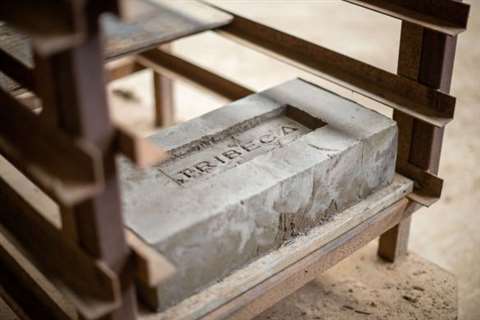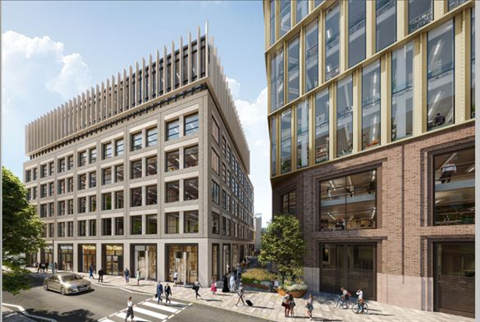Subsoil recycled into bricks
12 July 2022
VolkerFitzpatrick and architecture firm Bennetts Associates are using bricks made from excavated subsoil (clay) for new mixed-used development in the United Kingdom, as a way of recycling construction material into a sustainable alternative.
 HG Matthews adds sand and straw to subsoil to make the natural bricks, (Photo: HG Matthews/VolkerFitzpatrick)
HG Matthews adds sand and straw to subsoil to make the natural bricks, (Photo: HG Matthews/VolkerFitzpatrick)
The Apex in Camden is the first of five mixed-use, multi-storey buildings that are being constructed to form the ‘Tribeca’ development in the King’s Cross area of London.
As a part of a circular economy approach, VolkerFitzpatrick is working with traditional brickmaker HG Matthews, which combining subsoil excavated from the site with “sand and straw to create unfired bricks”.
Also known as earth blocks, the bricks are tested to British standards, regulations and strength, before being transported back to the site where they are being used to construct the new building’s basement perimeter walls.
While standard blockwork offers “limited recycling potential”, earth blocks can be broken down and reused, or returned to nature at the end of their lifespan.
According to VolkerFitzpatrick, using the natural material also helps to regulate the indoor temperature and humidity levels of the building, and helps to purify the air by trapping airborne pollutants.
 The Apex is one of five multi-storey buildings that will make up the Tribeca development in the UK. (Image: Bennetts/VolkerFitzpatrick)
The Apex is one of five multi-storey buildings that will make up the Tribeca development in the UK. (Image: Bennetts/VolkerFitzpatrick)
Rakesh Chavda, senior project manager at The Apex, said: “We are so proud to be a part of such a sustainable project.
“The earth blocks will undergo a unique lifecycle in which they are able to end up exactly where they started from and we hope this technique can be applied to other large scale developments in future.”
VolkerFitzpatrick, which is working on behalf of project developer Reef Group, said the seven-storey-tall Apex building will be the first large scale structure in the country to feature subsoil as a construction material.
“The aim is to set a pioneering precedent on using earth blocks for the construction industry. In total almost 14,000 earth blocks will be laid, covering over 90m³,” said the company.
Situated on the banks of Regent’s Canal, which is home to multiple biotech and medical research companies, the Tribeca development will comprise around 90,000 sq m (1 million sq ft) of workspace, state-of-the-art laboratories and residential units.
VolkerFitzpatrick is expected to finish works on the Apex building in 2023, with construction of the development’s other structures - known as the Reflector, Platform, Connector and Assembly - due to be completed by 2026.



